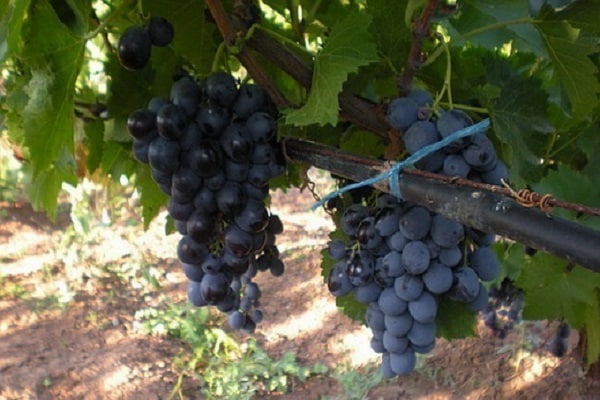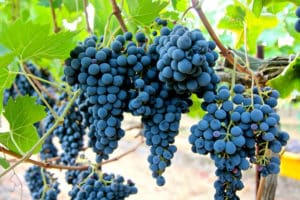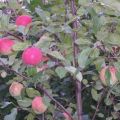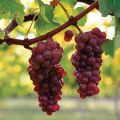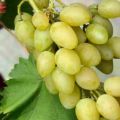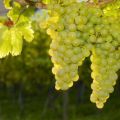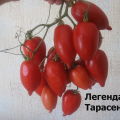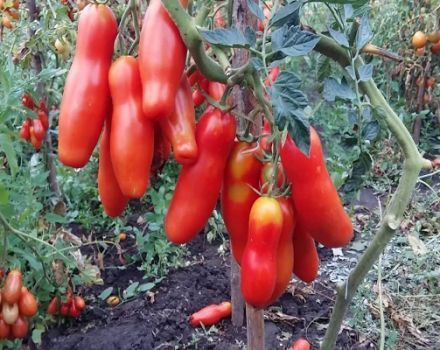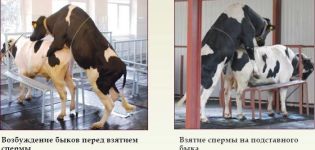Description and characteristics of the Bastardo grape variety, history and growing rules
Huge plantations in France, Portugal, Italy, Spain, Ukraine, Belarus, Moldova are given for the cultivation of Bastardo grapes - one of the best varieties for winemaking. It is also cultivated in the southern regions of Russia. Berries of technical maturity varieties Bastardo and Bastardo Magarachsky have long been used for the preparation of port wines and noble wines of different strengths.
Bastardo grapes - description
The variety is self-fertile, its flowers are bisexual. The bunches are small. In mature form, the weight of each of them is from 150 to 175 g with a length of 11 to 14 cm and a width at the base of 9 to 11 cm. The structure is conical, the friability is average. The berries are medium to small in size. Berries contain from 2 to 4 seeds.
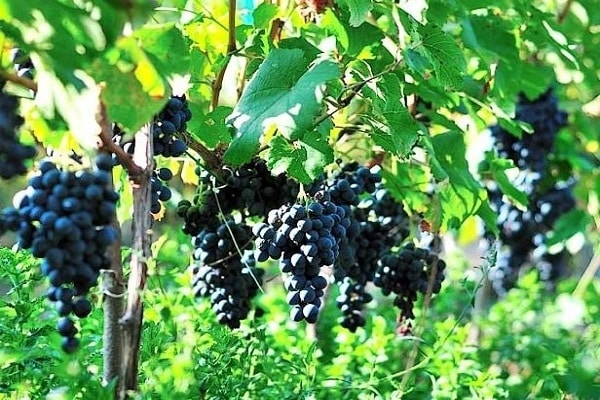
Winter hardiness of the varieties is average, as well as to fungal infections of oidium and mildew. The main enemy of Bastardo is gray rot. With the exception of small discrepancies in the description of the leaves and the distances between the nodes, the Magarachsky variety coincides in the appearance of the bunches and berries with Bastardo.
Legend and historical background
Some historical sources claim that the birthplace of this grape variety is France, which, obviously, is facilitated by the name of the variety. Translated from French "Bastardo" is an illegitimate nobleman. Others include France, Armenia, Portugal. If you believe the more ancient manuscript sources, then the winegrowers of Ancient Hellas were involved in the first selection of the variety for winemaking.
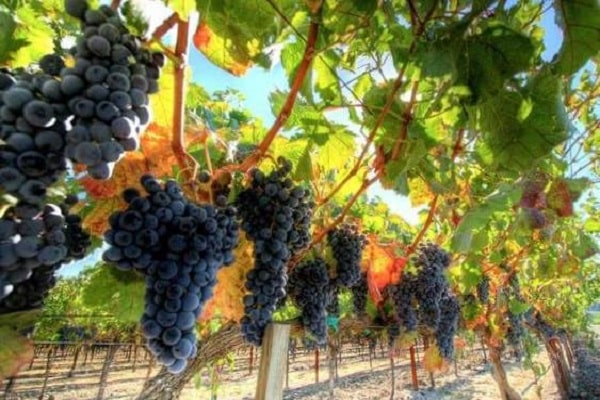
The legend of the creation of Bastardo wine
The beginning of the 19th century, winemaking is at a low stage of development. Despite the large areas allotted for vineyards of different varieties, there are not so many wines. The ruler of Portugal Fernando II decided to stimulate his subjects to create a new variety of wine with a gift of 300 hectares of land for vineyards. The condition for receiving the reward was to create a bright, exquisite bouquet.
Many tried to please their king, but none of the drinks presented fully satisfied the noble person.
So the prize would not have been awarded, if not for a happy coincidence - in a hurry to hand over home-made drinks to Fernando II's tasting, a commoner girl and a young man from a wealthy family collided, the girl's container cracked in the collision, and the wine poured onto the ground. The guy offered to drain the rest of it into his jug, presenting the wine to the king as a result of common efforts.Thus, the mutual sympathy of young people helped to create an interesting blend of Bastardo wine, with a strength ratio of 16% and 12% sugar.
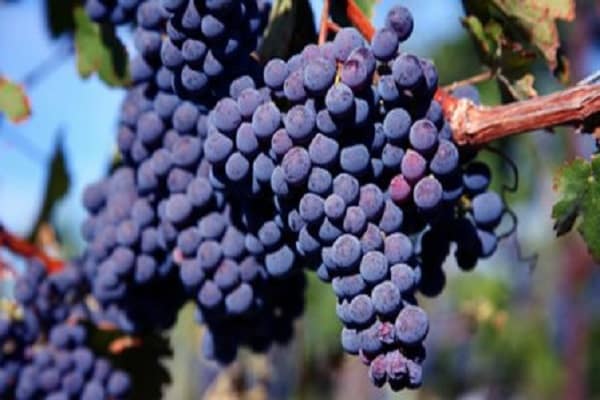
When the king asked who created this amazing drink, the lovers began to give the branch of primacy to each other. Thanks to the wisdom of the sovereign, the wine got its name "Bastardo", an illegitimate nobleman, in which weak and strong blood are mixed.
Description of appearance
Young shoots are distinguished by white tops with a raspberry tinge, in the upper part there is a characteristic fluff. It falls off as the bark thickens. On two-year-old shoots, there is no longer fluff, and their bark becomes light brown.

Small, smooth, 5-lobed leaves with a slight dissection. The short lateral aggregates of the leaf more resemble a lyre; the petiole has a deep oval cut. On the underside of the leaf blade, there is gentle pubescence, on the veins of bristles. In the Bastardo variety, the Magarach leaf has a more saturated color, the leaves differ in an uneven, asymmetric carved border along the edge.
Qualitative characteristics
The bush has 50% fruiting shoots. From one hectare planted with a hybrid variety, from 107 to 180 centners of berries are harvested per season. The resistance of the variety to frost and drought is noted.
When forming a bush, a low and high stem of the culture is determined, which is dictated by the climatic conditions of the region where Bastardo grapes are grown.
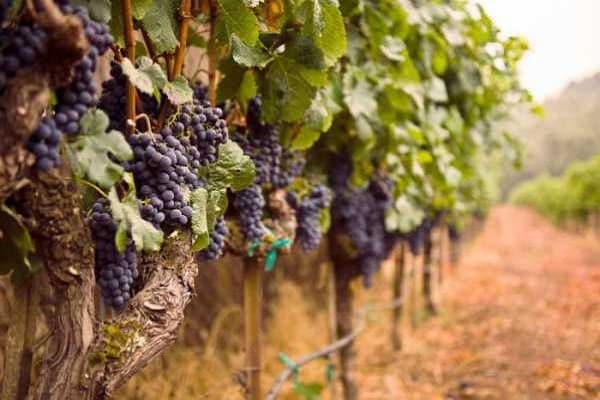
Ripening terms
The growing season of Bastardo grapes lasts 146-150 days. It manages to ripen the crop only in warm, sunny regions.
An unrivaled variety for winemaking
The combination of acids and sugars in the mass fraction of juice obtained from Bastardo berries is considered to be unsurpassed. Sweetness is ≈ 23.5%, acids are about 8%. The ratio of acids to sugar in the berries of this grape variety makes Bastardo the optimal raw material for the production of dark ruby dessert wines, which differ:
- long aftertaste;
- enveloping texture;
- velvety aroma;
- hints of chocolate.
Used grapes Bastardo in the manufacture of semi-sweet, dry, fortified wines.
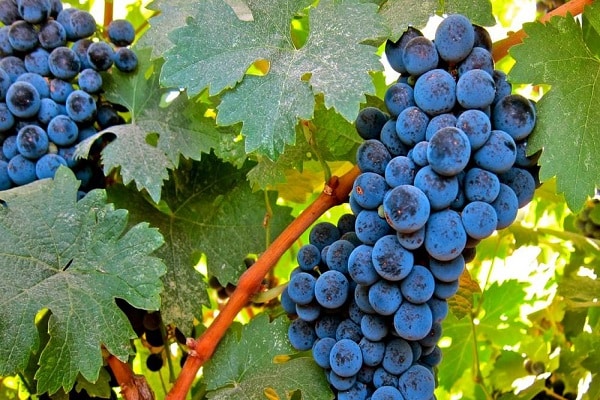
Disease and pest resistance
Resistance to mildew and powdery mildew diseases is rated as average. Weak resistance of the Bastardo variety to gray rot, it can be caused by a relatively cool air temperature and oversaturation of the soil with moisture.
Description of berries
On one cluster grow relatively large berries up to 15.5 mm in length and 12 mm in width and smaller, oval berries. The peel is dark blue, the flesh is red-burgundy, at a certain stage of ripening with greenish veins. The berry contains from 2 to 4 seeds.
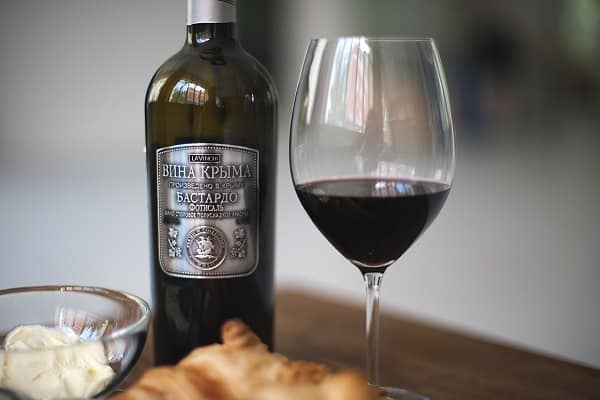
Growing and caring for the vine
For each region where Bastardo grapes grow, there are peculiarities of care, which is determined by the density and fertility of the soil, the humidity or aridity of the region, the real, and not the calendar, dates of the onset of spring.
Pruning
When a low stem is formed during autumn pruning, 4-5 buds are left on the vine. A more gentle pruning is recommended for a tall stem - 6-8 buds should remain on the shoot.
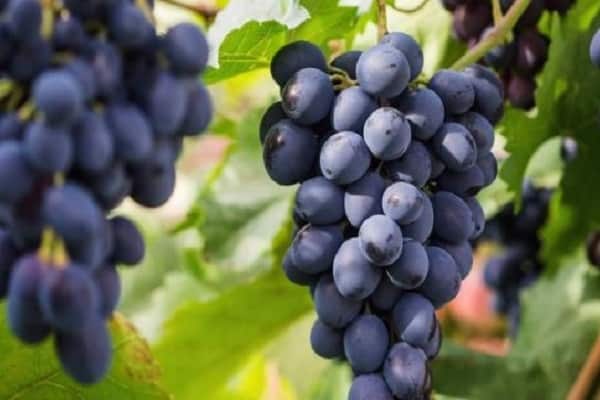
Irrigation
When growing grapes, 4 mandatory abundant watering is recommended per season:
- the beginning of flowering;
- the formation of ovaries;
- a set of bunches of weight;
- before the onset of cold snaps.
Considering that mainly the Bastardo variety is grown in mild climatic zones, during a drought period, at the stage of juicing with berries, an irrigation method of irrigation should be used. The system, which turns on in automatic mode, will allow to grow grapes on large areas without attracting additional labor.
Top dressing
Grapes practically do not need organic feeding, but at the stage of flowering and fruit formation, it is imperative to saturate the soil with nitrogen, at least twice a season. When the berries are formed, phosphate feeding is required. Mineral complexes are introduced into the soil as needed, which can be judged by the appearance of the bush.

Protection from diseases and pests
At the stage before flowering, the vine must be sprayed with insecticides. If leaves, bark are damaged by diseases or insect pests, the shoot is cut off immediately and burned. All fallen fruits and leaves must be regularly removed from under the bushes, they can cause damage to the plant.
Harvesting and application of the crop
Ripening of berries is simultaneous. As a raw material for wine, the harvest is harvested at the stage of technical maturity and immediately sent for processing - the production of wort. Overripe grapes are suitable for drying raisins, but this method of processing is rarely used due to the presence of seeds. Like any berries, sweet Bastardo can be eaten raw.
